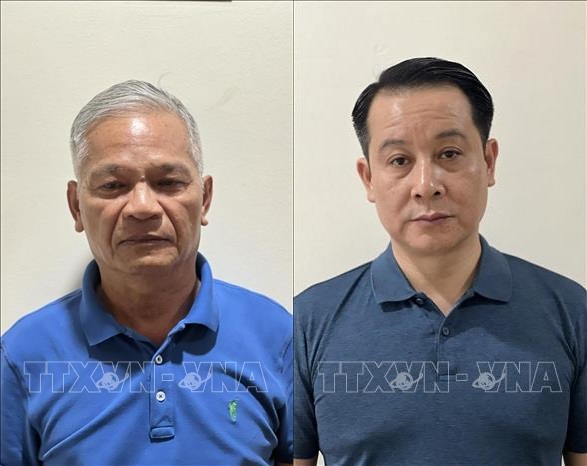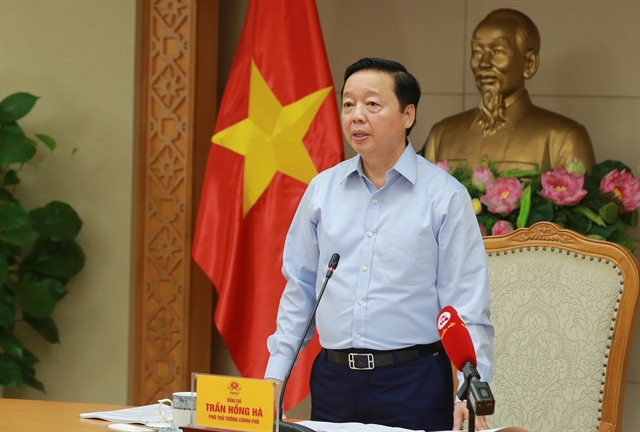 Sunday
Sunday

Every year, thousands of people move to HCM City looking for work thus placing a strain on transport, educational and healthcare systems. A new master plan envisions improvements in infrastructure and services in the region that would help relieve overcrowding in the city and provide a higher quality of life to both provincial and city residents by 2030.
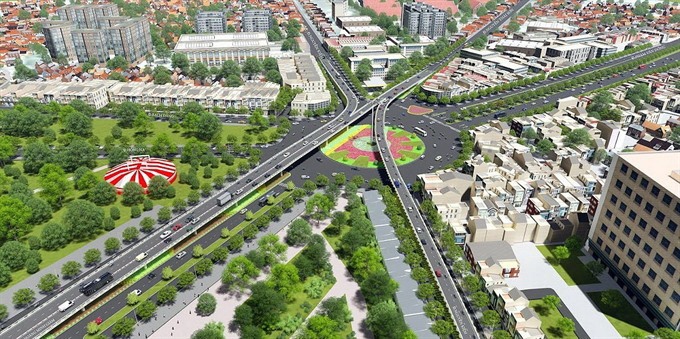 |
| An overpass with three branches, which has been partially built, will help ease congestion on streets around Tân Sơn Nhất international airport. Photo courtesy of the city’s Department of Transport |
Every year, thousands of people move to HCM City looking for work thus placing a strain on transport, educational and healthcare systems. A new master plan envisions improvements in infrastructure and services in the region that would help relieve overcrowding in the city and provide a higher quality of life to both provincial and city residents by 2030. Bồ Xuân Hiệp reports.
HCM CITY — Five years ago, Hoàng Thị Thùy Vân left her hometown in Vĩnh Long Province in the Mekong Delta to move to HCM City to find a job with a decent income.
“It’s a nightmare to go to work every morning and come back in the afternoon because of the traffic. But I have to stay here to earn a living,” she said.
Vân, who lives in Gò Vấp District, works at a clothing factory at an export processing zone in District 7. “To be upfront, I really don’t like to live in a packed city like this, but I have no choice. If there were enough jobs in my hometown, I wouldn’t live here.”
Vân is among the thousands of people who move to HCM City and other big cities each year, adding to the ever-expanding population to those areas.
A former director of the Việt Nam Chamber of Commerce and Industry’s Cần Thơ City Branch, Võ Hùng Dũng, said that migration from provinces had increased dramatically over the last decade.
The president of the HCM City Real Estate Association, Lê Hoàng Châu, noted that about 3 million of the estimated 13 million people in the city and its outskirts had moved from other areas in the country.
In recent years, the city’s average population growth rate has been around 3.5 per cent per year, while the growth rate of new incoming residents has been 2.3 per cent per year, according to Châu.
Besides new residents, students from other provinces flood the city each year to attend universities, colleges or other schools. Around 400,000 of the city’s 500,000 university students are from provinces.
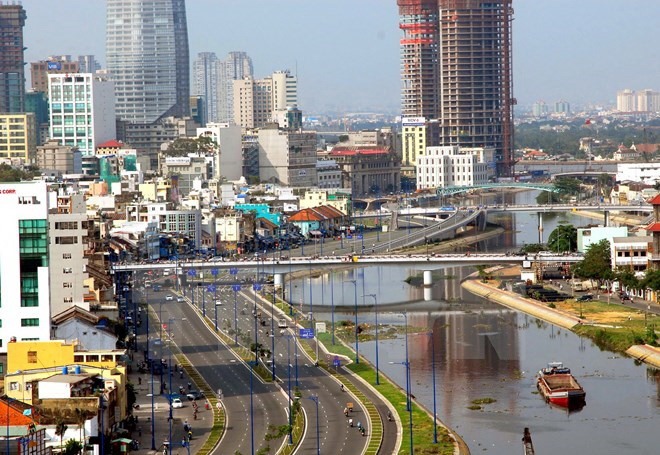 |
| Võ Văn Kiệt Street in HCM City’s District 1. Under a new master plan, the city hopes to improve transport infrastructure to cope with the rapid development of suburban areas. VNA/VNS Photo Hoàng Hải |
Of the more than 274,600 workers at the city’s 17 export processing zones and industrial zones, nearly 200,000 are from provinces.
In the last decade, HCM City has been struggling to build roads, bridges and water supply and drainage systems to keep pace with rapid growth. Traffic congestion has become a major issue, while schools, hospitals and other public facilities continue to be overloaded.
“I think our policy on urbanisation should be revised. We should create favourable conditions for each urban area to develop,” said Nguyễn Hồng Thục, director general of the Settlement Research Institute at Việt Nam Union of Science and Technology Associations.
Improved public transport and other infrastructures would also encourage people to move to the city’s outlying districts, she added.
Regional planning
Early this year, the Government approved an adjusted master plan to 2030 for the HCM City region, which covers an area of 30,400 square metres and includes the city and the seven surrounding provinces of Bà Rịa - Vũng Tàu, Bình Dương, Bình Phước, Tây Ninh, Long An, Đồng Nai, and Tiền Giang.
The plan calls for better connectivity, with the aim of making HCM City a Southeast Asian hub for commerce, culture, education and training, and science and technology.
 |
| Traffic jams occur regularly on Trường Sơn Street near Tân Sơn Nhất international airport in HCM City. VNA/VNS Photo Hoàng Hải |
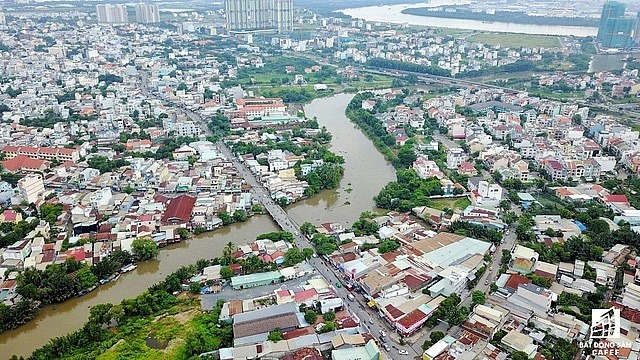 |
| Nguyễn Duy Trinh Road linking HCM City’s District 2 and District 9 is being extended by 30km this year. Under a master plan for the city and region, roads linking districts and neighbouring provinces would be expanded and extended by 2030. Photo vir.com.vn |
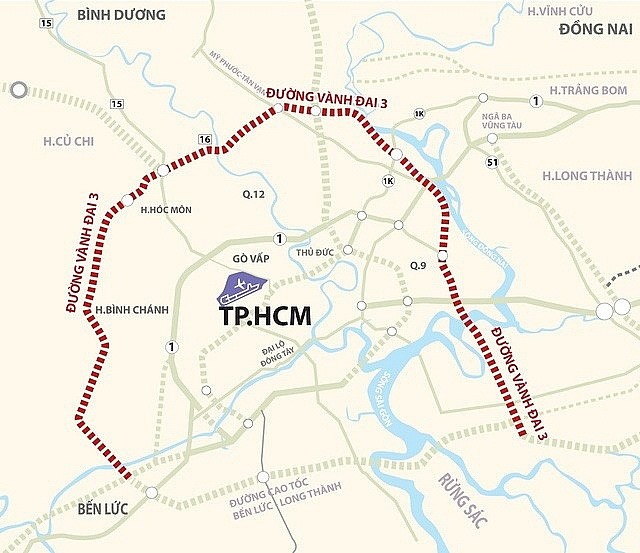 |
| The proposed Ring Road No. 3 would traverse HCM City and the surrounding provinces of Bình Dương and Long An. By 2030, the city’s Belt Road No. 3 would be completed, and construction of Belt Road No. 4 would begin. Photo vir.com.vn |
Under the plan, HCM City, the nuclear urban centre, would connect to surrounding areas, and become an international economic hub with links to economic zones in the South, the Mekong Delta, the Central Highlands, and the south-central coastal region.
The master plan also focuses on completion of new expressways and belt road systems. By 2030, four new expressways would be built, including Biên Hòa-Vũng Tàu, HCM City-Thủ Dầu Một-Chơn Thành, HCM City-Mộc Bài, and Dầu Giây-Đà Lạt.
By 2030, the city’s Belt Road 3 would be completed, and construction of Belt Road 4 would begin.
New railway routes would also be built, including the Trảng Bom-Sài Gòn Railway Station, Biên Hoà-Vũng Tàu, HCM City-Mỹ Tho-Cần Thơ, and HCM City-Tây Ninh.
By 2030, HCM City and the seven surrounding provinces are expected to have a total population of 24-25 million, with 18-19 million in urban areas and 6-7 million in rural areas, with a regional urbanisation rate of 70-75 per cent, according to the city authorities.
The city currently has one of the fastest rates of urbanisation in Asia, according to the World Bank.
Senior economist Kai Kaiser at the World Bank in Việt Nam, said: “HCM City’s built-up land has rapidly expanded in the past 20 years. Administratively, the city covers just over 2,100sq.km, about six times the size of Washington, DC.”
“In parallel to rapid population growth that occurred between 2000 and 2015, the city’s built-up land cover has expanded dramatically, with some of its two dozen districts showing more than 70 per cent increase in built-up land cover,” he said.
Compared to a master plan approved in 2008, the new plan calls for balanced development that would change the structure of the economy, increase residents’ income, centralise local industry, and balance supply of infrastructure and social services in the region, according to the Southern Institute for Spatial Planning.
Local communities would be better connected through roads and improved information management systems, and have access to a greater variety of services.
Late last year, the city launched a website and smartphone application that allows the public to view the cadastral map (legal map showing land parcel boundaries and ownership) and designated planning and zoning for some city districts.
The complete version is expected to be launched by the end of the year, according to Kaiser.
“The city’s leadership noted that the objective of this transparency was to improve urban planning governance, and that the platform would set the groundwork for the city to build more data layers for such things as construction permits and land information, and other applications to manage construction, underground space, and buildings,” he said.
Improved railway and road connections also play a major role in the master plan. HCM City has been working with authorities in the provinces of Long An, Tiền Giang, Vĩnh Long and Cần Thơ on the construction of the HCM City-Cần Thơ railway.
After completion of the railway, working people in the Mekong Delta would commute from home to HCM City, relieving pressure on the city.
The ministry has also been asked to speed up construction of Ring Road 2 and Ring Road 3 as well as expressways that would connect the city and provinces.
An extension of the city’s first metro route was also recently approved that will link Bến Thành Market with Suối Tiên Theme Park in District 9 to the neighbouring provinces of Bình Dương and Đồng Nai.
The metro line will extend to Đồng Nai’s Biên Hoà City and Bình Dương’s Dĩ An Town, as proposed by the metro project’s Japanese consultancy joint-venture Nippon Koei-Tokyu.
Fujita Yasuo, former chief representative of the Japanese International Co-operation Agency (JICA), said that JICA would continue to co-operate with the Vietnamese Government at the highest level to implement Japanese ODA-funded projects in the future.
Under the master plan, HCM City’s International Tân Sơn Nhất Airport would also be upgraded and expanded to increase its capacity to 40-50 million passengers and 1-2 million tonnes of cargo a year by 2030.
Meanwhile, the proposed Long Thành International Airport, to be located in Đồng Nai, would be built according to approved investment phases.
Nguyễn Trọng Hoà, former head of the HCM City Institute of Research and Development, said the city should encourage people to move to “Bình Dương and Đồng Nai provinces instead of outlying districts Bình Chánh and Nhà Bè, which flood and have weak soil”.
He said the city should build bridges to connect to Nhơn Trạch District in Đồng Nai.
Lương Trí Thìn, CEO of Đất Xanh Group, noted that available land in HCM City was now limited.
“In the future, it’s likely that people can live in Đồng Nai, Bình Dương or Bà Rịa-Vũng Tàu provinces and work in HCM City. However, it would depend very much on how much we invest in infrastructure linkages,” he said.
Governance policies
Speaking at a recent meeting in HCM City, Châu from the HCM City Real Estate Association, said the city would consider transferring one-third of its agricultural land to urban land under National Assembly Resolution 54.
The transfer would create favourable conditions for the economy and the real estate market, he said.
HCM City has 118,052ha of agricultural land, accounting for 0.89 per cent of GRDP, while the city’s industrial and service land covers far less, around 14,260ha, accounting for 99.1 per cent of GRDP.
Last month, the city’s People’s Council approved a local resolution to implement NA Resolution 54 on piloting a special policy that would foster the city’s development.
The special policy devolves power to the city to make decisions on issues now made by the Prime Minister, including decisions related to land administration, investment, finance/budget, delegation of power to lower levels of administration, and salaries of officials, public employees and civil servants.
“The special policies will improve the city’s financial resources so it can better develop infrastructure, improve residents’ quality of living, and contribute to the country’s development,” Nguyễn Thị Quyết Tâm, chairwoman of the city People’s Council, said. — VNS

